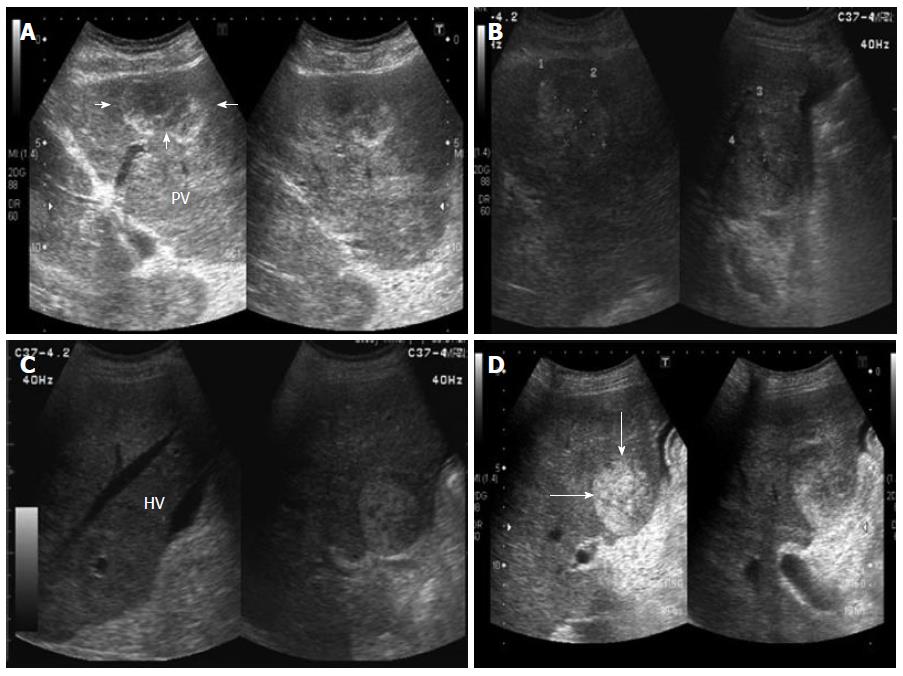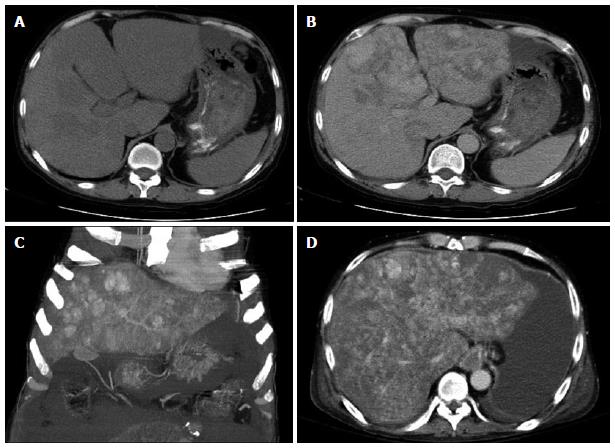Copyright
©2014 Baishideng Publishing Group Co.
World J Gastroenterol. Mar 7, 2014; 20(9): 2420-2425
Published online Mar 7, 2014. doi: 10.3748/wjg.v20.i9.2420
Published online Mar 7, 2014. doi: 10.3748/wjg.v20.i9.2420
Figure 1 Abdominal ultrasound showing multiple hyperechoic or mixed echoic tumors in the bilateral lobes of liver (arrows).
Minimal ascites was also detected. A: One mixed echoic tumor (arrows) at segment 3, left portal vein (PV); B: One mixed echoic tumor (marked) at segment 5; C: One hyperechoic tumor at segment 5, right hepatic vein (HV), minimal ascites also detected; D: One hyperechoic tumor (arrows) at segment 5 near the main portal trunk.
Figure 2 Liver dynamic computed tomography showing multiple liver tumors.
A: Hypodense liver tumors before contrast injection; B: Heterogeneous enhancement in the arterial phase and portal venous phase after contrast injection; C: Follow-up computed tomography showing increased size of the hepatic lesion; D: Massive ascites observed at 4 mo after the follow-up.
Figure 3 Microscopic analysis of liver biopsy specimens showing sinusoidal dilatation with red blood cell-filled cysts without endothelial lining cells.
A: 100 × magnification of hematoxylin-eosin stained biopsy specimens; B: 400 × magnification of A; C, D: Immunohistochemistry analysis of CD31 (C) and CD34 (D) in liver biopsy specimens showing diffuse positive staining in the sinusoid endothelial cells; E: Ki-67 staining of liver biopsy specimens. The cell proliferative Ki-67 stain index was within 20%-40%, indicating active cell proliferation in the tissue.
- Citation: Yu CY, Chang LC, Chen LW, Lee TS, Chien RN, Hsieh MF, Chiang KC. Peliosis hepatis complicated by portal hypertension following renal transplantation. World J Gastroenterol 2014; 20(9): 2420-2425
- URL: https://www.wjgnet.com/1007-9327/full/v20/i9/2420.htm
- DOI: https://dx.doi.org/10.3748/wjg.v20.i9.2420















